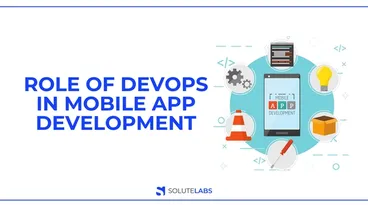Developing a mobile application is not an easy task. There are several steps, trials, and errors that you need to go through before you create an app that efficiently provides users with the features they need. This may take you several months or even years before you perfect your application.
However, your work doesn't stop once you have successfully created an app and launched it. The next challenge you need to overcome is to ensure that users are engaging with the application and finding it beneficial to use. Therefore, you need to come up with strategies that help increase user engagement on the app.
9 Ways to Increase App Engagement
User engagement is one of the most important metrics that you need to focus on once you launch your mobile application. Without enough users engaging with your app, you might find it hard to generate data that you can leverage and touchpoints that can be capitalized on later on. Here are some things you can do to increase your app's user engagement:
1. Use Fewer Welcome Pages
The first thing you need to do with your mobile application is to look at its UX design. Make sure you're not bombarding your users with overwhelming information right when they use the app for the first time. Although you might want to show users how to utilize your app right away, teaching them everything in one go can lead to information overload. It might even cause some users to get turned off and uninstall your app.
The key to keeping users interested in your app when they first download it is by using fewer welcome pages. Your intended users shouldn't have to go through several welcome pages that inform them how to use your app before they can actually try its features. Instead, compile a brief and concise copy that explains your app's key features and benefits and spread it out over three to five welcome pages.
2. Display a Progress Bar or Checklist
If your app requires several actions—such as signing up, completing a profile, or learning how to use complex features—before users can fully use it, you should use a progress bar or onboarding checklist. This feature will tell users how far into the tutorial or onboarding process they are, so they will know what to expect and be mindful of the progress they have made.
A progress bar or checklist can also help motivate users in completing your app's tutorial. This gives them a boost of positivity and the feeling that they're accomplishing something even while simply following the prompts and reading your app's instructions.
3. Drive Action With a CTA Button
Once your new users have finished signing up, you should use a CTA button to push them to take the first essential action on your app. This will not only allow them to learn more about the features of your mobile application but also help them get started in using its main functionalities.
For example, if your app needs to be connected to a social media account for an individual to use it, you should ask users to link their profile to your application right after the welcome pages. Make sure to create a CTA button that tells them this is a required step before they can fully take advantage of your mobile app.
4. Use Larger Buttons
Although small buttons look neater and more minimalistic than bigger ones, larger buttons will have a bigger impact on your app's user engagement. Larger buttons are more visible and easier to tap, which means they can help users take action faster.
Moreover, you should remember that your users have different hand and finger sizes. If your app only has small buttons, then it might be hard for some users to use and click on them. This might lead to them being frustrated with your app and stopping using it altogether, no matter how useful its features are.
5. Gamify Your App
No matter the main function of your mobile application, there's no harm in adding some fun to it. By gamifying some parts of your app, you can make sure that users are enjoying themselves by using it.
There are several ways you can gamify an app, whether through milestones or friendly competitions. To motivate your users more, you can even offer prizes to people who achieve a certain milestone or those who beat other users in a competition.
6. Take Advantage of Synchronization
One way to boost your app's visibility online is by synchronizing your mobile application with social media platforms. This will help you promote your application on different social media networks, boost your digital marketing activities, and encourage more users to try your app.
Syncing your app with social media platforms can also help users in signing up for your application. Instead of filling out several pages of forms, they can simply link their social media profile with your application in just a few clicks. This can help you keep their interest in your application and make sure that they stick through the onboarding process.
7. Use Push Notifications
Push notifications are a great way to remind users about your application and keep them engaged. By using push notifications wisely, you can also encourage users to take action or explore new areas of your application.
However, you should make sure that your push notifications are relevant and interesting to users. Otherwise, they will be more likely to ignore your notifications or disable them altogether. You should also make sure that your push notifications are not too frequent, as this might only lead to app fatigue and fewer sign-ups.
8. Give Out Rewards
It's important to reward your users for completing the onboarding process. This can be done through discounts, points, or even virtual rewards. Having something to look forward to will make them more likely to stay with your app and continue using it regularly.
Additionally, you can give out physical awards to help boost your user engagement. These could include gift cards and vouchers that users can use to avail of discounts on their purchases. This will help them save money and incentivize them to come back to your app more often.
9. Improve Your App Speed
Nothing turns users off faster than a slow-loading application. This is why ensuring that your app runs as quickly as possible should be one of your main focuses when developing it.
You can do this by optimizing your app's code, reducing the size of its images, and cutting down on unnecessary features. All of these can help make sure that your app runs smoothly and quickly, preventing users from giving up on it before they even get to explore its features.
Also Read: 14 Web Design Tips and Tricks for a Perfect Site
Help Your App Succeed in a Competitive Market
By implementing the tactics listed above, you can make sure that your mobile application is attractive and user-friendly. This will help you stay competitive in a crowded market and make sure that your app stands out from the rest.
Additionally, with a great-looking app and the right features, you can make sure that your users stay engaged and keep coming back to use it. This will help you gain more user traction, which is essential for any successful mobile application.
To conclude, we can say that mobile apps are some of the most successful digital experiences today. However, it's not just about how amazing your app is but how engaging your users find it. If you follow all the tips mentioned above, then you'll be able to increase engagement in no time!
At SoluteLabs, we develop mobile applications that help businesses achieve their goals. Call us now and get a free consultation if you're looking for custom solutions!
Frequently Asked Questions
Have a product idea?
Talk to our experts to see how you can turn it
into an engaging, sustainable digital product.





